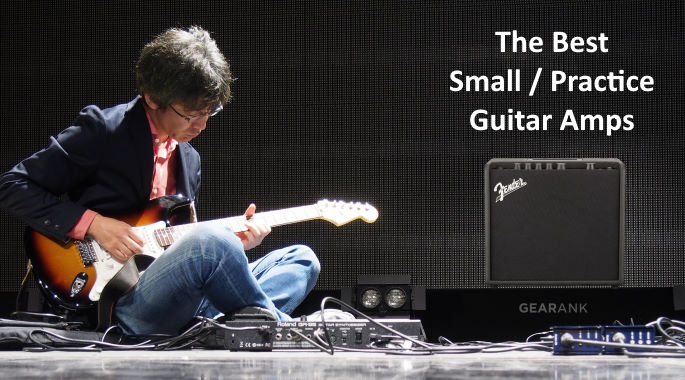
Find the best practice amp to help you progress faster. Our resident guitar teacher cuts to the chase to give you his stand-out picks.
Disclosure
We recommend all products independently of 3rd parties including advertisers. We earn advertising fees from:
• • • • •

• • • • •
Amazon
As an Amazon Associate we earn from qualifying purchases.
• • • • •
More Guitar Amps
It’s a great time to be a student guitarist. There are now so many outstanding practice amplifiers that better cater to practice and learning.
If you prefer plug-and-play simplicity, you can go for a small tube amp or a basic solid state amp. But you are no longer limited to a traditional combo practice amp.
Those that prefer versatility can go for portable modeling amps. There are also desktop friendly combo amps that are better suited to home studio setups, complete with multiple amp tones and recording capability. Whatever your preference may be, there is a perfect practice amp for you
What makes a Great Practice Amp
Before we go into the ins and outs of the best practice amps, let us first define what a good practice amp should be. The short answer is that it should make playing guitar enjoyable, for you and for the people around you. It should make practice sessions fun and productive.
The long answer will depend on your setup, practice space, and playing style. If you want simplicity, then solid state practice amps are for you. If space is an issue, then go for a little amp. If you want multiple amp sounds, then go for modeling practice amps.
Below are the best practice amps that cover the requirements mentioned above. If you’re looking to make practice fun, and take your musicianship to the next level, this guide is for you.
The Best Practice Amps (2024)
| Gearank* | SRC* | Check Price | ||||||
|---|---|---|---|---|---|---|---|---|
| Under $200 | ||||||||
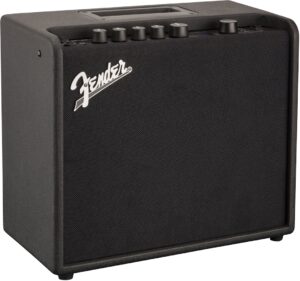 | Fender Mustang LT 25 | 96 | 3850+ | |||||
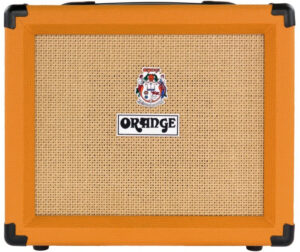 | Orange Crush 20RT | 94 | 1150+ | |||||
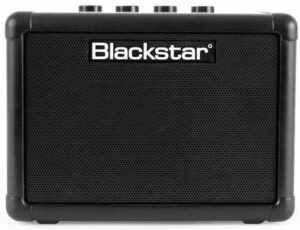 | Blackstar Fly 3 | 94 | 4650+ | |||||
| Under $500 | ||||||||
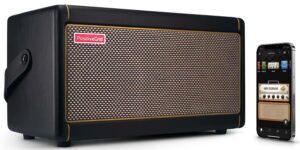 | Positive Grid Spark | 94 | 7250+ | |||||
 | Yamaha THR10II | 92 | 800+ | |||||
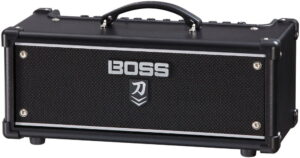 | Boss Katana Head MkII | 96 | 450+ | |||||
Practice Amps Under $200
Fender Mustang LT 25
Cons
- 8" Small speaker means limited bass response
- High-gain amp models aren't as good as the clean ones
- Does not have the classic Fender amp aesthetics
Pros
- Fender style clean tone sounds good
- Amp models and effects cover a wide variety of musical styles
- Good balance of features, intuitive controls, and portability
- Commendable build quality and sleek design
2024 sees Fender's continued success in the guitar practice amp market. The LT 25 being chief among their popular offerings in the sub $200 price range. This amp is rated at 25-Watts and has an 8" speaker, housed in a modern and sleek-looking cabinet.
Being part of Fender's Mustang line, the LT 25 is unapologetically a full-on amp modeler, with 25 digital effects, 50 presets, and 20 amp models. These are more than enough to cover a wide variety of musical styles.
As expected, its best voicings are ones that emulate classic Fender tube amps. They get the sparkle down nicely, albeit lacking a bit in the low end, because of its smaller speaker. Low to mid-gain amp models also sound quite good, with enough sensitivity to reproduce the nuances of your playing, great for fine-tuning your technique.
While it can cross over to high-gain territory, the result is not as good, mostly because the small speaker gives it a trebly voicing, and lacks the heavy bass that modern metal tones need.
For a versatile practice amp modeler, Fender was able to keep the control panel intuitive, and they did so by assigning more complex parameter control to be done via USB using a software editor. You can also use the USB connection to record your playing in DAW software.
Other features include built-in tuner, color display, aux input, and headphone out. It also helps that the LT25 feels solid and its sleek modern design looks nice.
The Fender Mustang LT 25 is a modern practice amp with classic tone sensibilities.
Specifications
- Power Rating: 25 Watts
- Speaker: 1 x 8"
- Models: 20
- Effects: 25
- Controls: Gain, Volume, Treble, Bass, Master, Preset Control Switches
- Input/Output: 1/4", 1/8" (Aux), 1/8" (Headphones)
- Extras: USB Connectivity, Built-in Tuner, and Tap Tempo
- Weight: 14.9 lbs.
| Website | Source | *Rating Value |
| Guitarist Next Door | Teemu Suomala | 92/100 |
| expertreviews | Darien Graham-Smith | 60/100 |
Orange Crush 20RT
Cons
- One trick pony
- Clean channel is a bit stale
- Limited connectivity (no USB)
Pros
- Low to mid-gain dirty tones sound great
- Easy to dial in and responsive controls
- Consistent sound and reliable
- Distinctly Orange look
With so many DSP equipped amps these days, it's impressive how a simplistic amp like the Orange Crush 20RT is still rating highly.
This amp is as old school as it gets, with just two channels and a digital spring reverb. There is no amp modeling, presets, or multiple effects, just a straightforward 2 channel clean / dirty configuration.
Nothing about it will confuse any guitar player, regardless of skill level, making it very suitable for practice and for quickly plugging in to capture and develop musical ideas.
The Crush 20RT's 20W solid state amp section drives a single 8" speaker, but it also comes with headphones out with speaker emulation in case you want to connect your Amp to Headphones, and practice quietly.
Note that the Crush 20RT has a built-in reverb effect and tuner, while the slightly cheaper Orange Crush 20 is the bare bones amp version.
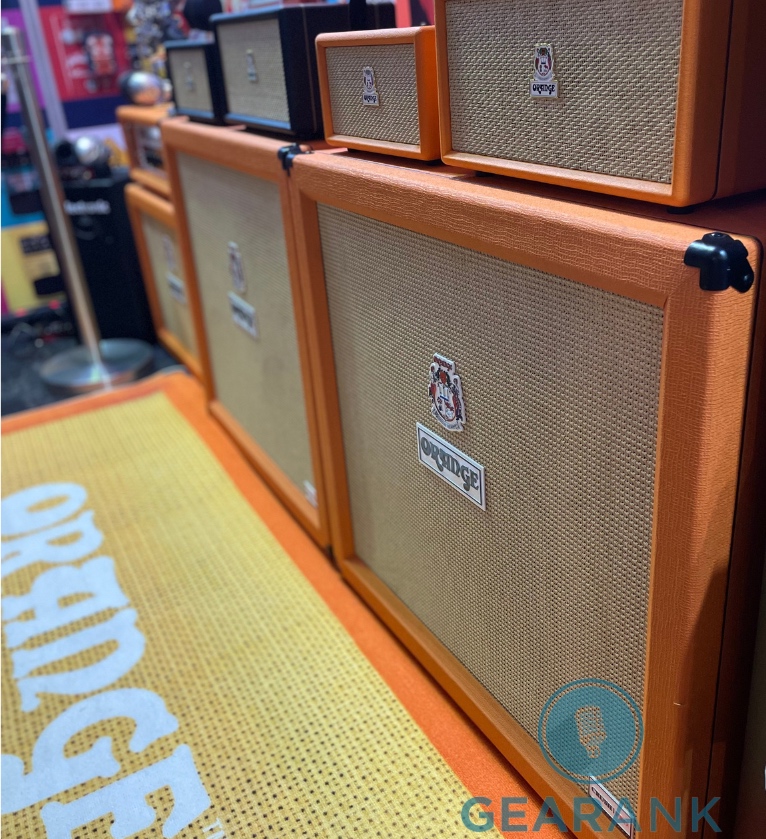
Orange Amplification Booth at the recent Melbourne Guitar Show
The dirty channel in particular is what makes the Crush 20RT a consistent top contender in this price range. It goes from low to mid-gain and does a good job of reproducing Orange' characteristically loose and open vintage style overdrive voicing. This type of voicing fits classic blues and rock styles really well. And it can be tweaked to be a bit tighter for more modern applications.
Speaking of tweaking, another good quality of this amp is how responsive the 3-band EQ controls are, allowing for a bit more flexibility that you don't really expect from its straightforward design.
The clean channel is OK but not as good as the dirty channel. It has a flat almost neutral sound that seems stale compared to other amps with good clean tone. It is still usable though, especially as a platform for pedals. And it also works well for those who prefer warmer clean tones that are prevalent in jazz.
Other features include a built-in reverb, tuner, and Aux input port.
If you’re looking for an easy-to-use practice amp with great distortion tone, the Orange Crush 20RT may be your best bet. Ironically, its main strength is also its weakness, if you want more effects and voicings, then this is not for you.
Specifications
- Power Rating: 20-Watts
- Speaker Size: 8”
- Models: N/A
- Effects: Distortion, Reverb
- Controls: Dirty, Treble, Middle, Bass, Gain, Clean, Reverb
- Input/Output: AUX-In, Headphone/ Line-Out
- Extras: Tuner, Voice of the World Speaker
- Weight: 15.9lbs
| Website | Source | *Rating Value |
| YouTube | Guitar Interactive Magazine | 90/100 |
| Guitarist Nextdoor | Teemu Suomala | 90/100 |
Blackstar Fly 3 Battery
Cons
- Clean tone is not its strong suit
- At 3W, this is a low volume practice amp
Pros
- Practice anywhere
- Conducive to practice
- Surprisingly full sounding for a small amp
The Blackstar Fly 3 is an affordable combo amp that allows you to practice virtually anywhere, thanks to its compact profile and ability to run on six AA batteries.
At less than 2lbs, this amp is as portable as it gets, while giving you good room level tones with its 3W amp section and 3" speaker.
It also has an MP3/line-in jack for playing along with your favorite tracks, while the headphones out allows for quiet playing.
All these features make it ideal for use during trips and hotel stays, especially when paired with a good travel guitar.
As expected, it features Blackstar's ISF (Infinite Shape Feature), which lets you change the amp's voicing from American to British with just one knob.
Specifications
- Power Rating: 3-Watts
- Speaker Size: 3”
- Channels: Clean, Overdrive
- Effects: Tape Delay
- Controls: Gain, Volume, ISF, Delay Time, Delay Level
- Input/Output: 1/4", 1/8"(Aux In)
- Extras: ISF, Can Run on 6 x AA Batteries
- Weight: 1.98 lbs
| Website | Source | *Rating Value | The Gear Page | Jackstand Johnny | 96/100 |
Practice Amps Under $500
Positive Grid Spark
Cons
- Speakers sound 'muddy' when set to high volume
- Requires Mobile/Tablet for detailed control. No Desktop Software
- Ads for expansion pack in the controls
Pros
- Good wireless mobile app integration
- Good collection of Amp and Effect Models
- Compact 'Boutique Amp' looks suitable for home use
- Versatility - Stereo Guitar, Bass, and Acoustic Amp as well as Bluetooth Speakers
- Excellent Practice Options
The Spark 40 is pitched as a home practice amp for electric guitar, bass guitar, and acoustic guitar which is a lot to pack into one unit. If that's not enough it's also a pretty capable Bluetooth speaker as well. It's intended to be used with PG's "Spark Amp" app via Bluetooth which is available on the Android and IOS app stores.
Positive Grid started off making effects and amp modeling apps and their experience shows here. The app has great ratings in both app stores, a rarity in the world of musical equipment whose apps are normally flooded with user complaints.
It really is a smooth and polished experience that 'just works' while offering a ton of useful options. This is a good thing because there's no PC or Mac software available to control the amp via USB (apart from firmware updates). If you're uncomfortable about relying on a mobile app for much of the amp's functionality then this isn't for you.
Pairing to the app via the Bluetooth is fairly simple and thankfully doesn't require any sort of registration. It seems to be happy to pair with new devices so if you've got the amp in your hands you can do it. Once paired you can connect at any time which takes a few seconds. I found the connection to be solid while you're using the app but if you put it in the background things can get a little glitchy and you may need to reconnect.
Controlling the amp models and effects in the app is fairly straightforward. The signal chain is laid out as a virtual pedalboard with 6 effect pedal type slots and one amp model as below:

You can't change the order but each pedal type slot (apart from the Noisegate) has various modeled pedals available. This offers a reasonable number of options without things getting too overwhelming. I count a total of 42 pedal effects, 25 Guitar amps, and 4 amps each for acoustic and bass guitar not including the optional Jimi Hendrix expansion pack.
There's a great list of the effects pedals here and the amp models here. It's not the 'everything plus the kitchen sink' approach that you can get in more expensive units or PG's software modeling apps but there's a pretty good selection. They did a good job emulating the preamp and power amps of popular amp models.
The effects and amps are more or less fixed apart from firmware updates. They have added new effects and amps in a couple of firmware updates, some for free as well as the Jimi Hendrix expansion pack that's available for $20. I'm all in favor of being able to access new paid options via a store section but they add these as selectable options in the main interface which is annoying.
The fact that you've loaded them on the amp, taking up memory that could be used for other effects doesn't sit well with me either. I'd really like to see the capability to download new effects/amps on the fly via the app in future iterations like PG does in their BIAS apps.
On the other hand the Spark "ToneCloud" provides over 10k Amp-and-FX presets for Guitar and Bass covering all manner of styles, artists, and songs from Metallica to Dire Straits, 'Dirty Flexi' to 'Acoustic Ambience'. You can easily download these to your phone and amp but you do need to create an account for this. You can also share your own patches via Tonecloud and they rank the most liked and downloaded in a variety of categories.
At the time of writing the number 1 patch is in fact "Metallica" with over 155k downloads. It's a great heavy patch that had me playing those Locrian style riffs for longer than I'd planned. They can be a great source of inspiration or distraction but more importantly, they can help players find the tone they're looking for without having to tweak all those parameters themselves.
The models themselves are quite good and the amps and effects are realistic but there is an issue that we'll get to in a moment. Positive Grid were previously known for their excellent 'BIAS' software modeling apps and that experience shines through here. Apart from realistic amps, the effect that blew me away the most was the stereo reverb which really can make it sound like the reverberations are coming from the room you are in rather than the amp.
On one patch I could swear there was an actual reverb spring sitting several meters from the amp. I don't know how they achieve this and it's a bit uncanny. For some patches, you may actually want to tone it down a bit.

The Spark 40 on a table. Ideally it should be closer to the edge to reduce low frequency build up
When it comes to sound though there is an issue that we need to talk about. It has divided users between those that don't hear it, those that don't mind and those that think there's a problem. For me, the moment I started playing through the amp the sound coming from the speakers was overly 'bassey' for electric guitar. You won't have to look far to find many others experiencing the same, describing it as 'Muddy', 'Muffled', 'Boxy', 'Wooley', and complaining about the lack of brightness.
It's surprising for such small speakers really but they do put out a lot of low end and that can obscure the high end, particularly the high midrange that's so important for guitar. Personally, I can still hear and appreciate the tones which do sound good themselves but alongside a certain 'rumble'. I found myself using the bridge pickup to get the same tone as the bridge/neck mix on my humbuckers and but that didn't quite work.
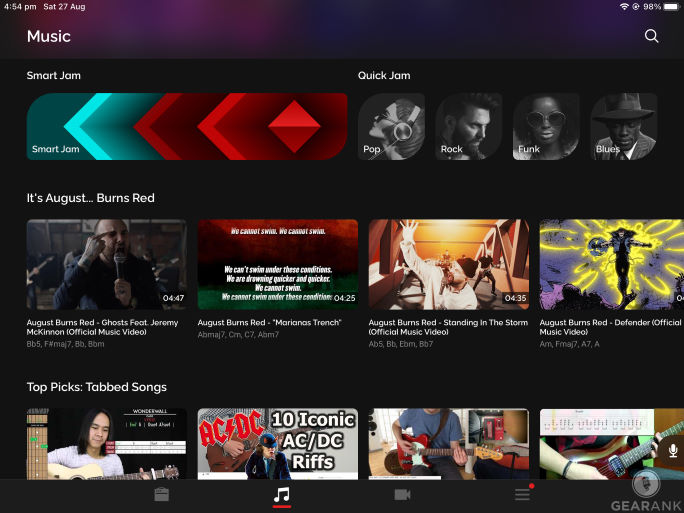
The Spark 40 app's backing tracks and smart jam options
Positive Grid have taken software and hardware integration to another level with the Spark 40 producing a compact amp that's crazy versatile and a system that 'just works' for home practice use. They've shown the way forward in this respect and once you've seen what they can do it's hard not to want more - like an inbuilt looper, downloadable effects, a wireless guitar connection and what about battery power? You've got to pinch yourself and remember this is a sub $300 amp. It's not without flaws either. For some, the bass-heavy sound is an issue and while it can be addressed, it is a hassle. But there are legions of fans who love the sound straight out of the box.
Specifications
- Power: 40W Class D
- Speaker: 2x4"
- Models: 30
- Effects: 40
- Controls: Amp Type, Gain, Bass, Mid, Treble, Master, Mod, Delay, Reverb, Output Volume, Music Volume, Four Preset Buttons, Tap/Tuner Button
- Input/Output: 1 x 1/4" (Input), 1 x 1/8" (Aux-In), 1 x 1/8" (Headphones), USB
- Extras: Smart Jam, USB Audio Interface
- Weight: 11.46 lbs.
| Website | Source | *Rating Value |
| Gearank | Daniel Barnett | 85/100 |
| Wired | Parker Hall | 80/100 |
| Guitar World | Rob Laing | 100/100 |
Yamaha THR10II
Cons
- Not enough volume for jamming
- Limited amp models
- A bit pricey
Pros
- Versatile tabletop amplifier
- Sounds big and full for a compact amplifier
- Great sounding amp models
- Modern wireless connectivity
The popularity of desktop studio setups resulted in specialized amps that fit modern workflow better. The Yamaha THR10II is one such amp, with a rectangular profile that sits nicely on desks.
This desktop friendly profile puts its controls within arms reach, and better aligns the speakers to the musician, removing the need to stand or awkwardly reach down to tweak the controls of traditional amps. This position works nicely for practice, especially if you're working with online lessons and tutorials. And as a bonus, the amp looks elegant, like a boutique old radio that will fit nicely with the usual furniture you'd find at home.
The THR10II is a 20-Watt amp with stereo 3" speakers and built-in amp modeling that lets you choose between 15 guitar amp models, 3 mic amp models, 3 bass amp models, and a flat mode. It has five main amp models that include Clean, Crunch, Lead, Hi Gain, and Special. And each one has three variations: Modern, Boutique, and Classic. Unfortunately, this particular parameter is only available via the THR controller app.
The classic variation has a more balanced flavor, while the boutique one adds grit and feels more loose. Switching to modern gives you a boosted version of the amp models, with tight response, ideal for modern music styles. All of these can be tweaked further via the app.
What's really surprising about the THR amps is how big they sound, even with their small profile and speakers. The THR10II showcases this nicely, everything from clean to hi-gain sounds full. And they also don't have excessive high end fizz that's common among amp modelers. And this big sound definitely helps in making practice more fun.
To be clear, big doesn't mean loud, it's small 3" speakers can't provide the usual loudness that other practice amps provide. If you're looking for a traditional practice amp that has enough volume for jamming with a band, then go for a combo amp with louder projection.
Like most practice amps, it also houses essential effects that include reverb, delay, and various types of modulation. Other practice friendly features include USB direct recording, Bluetooth streaming, a built-in tuner, and built-in wireless compatibility with Line 6 relay wireless systems. All of these add up to a wide range of tone tweaking options that can be great for practice or for recording. And also reduces other gear and accessories that you need to buy, like standalone guitar tuners.
The Yamaha THR10II is a great all-around amp for home use, catering to both novices and experienced guitarists. It's a value-packed amp that addresses practice and home recording needs in a compact package.
Specifications
- Power Rating: 20-Watts
- Speaker Size: 2 x 3”
- Models: 15 Guitar Amps, 3 Bass Amps, 3 Mic Amps, Flat Mode
- Effects: Reverb(Spring/Hall), Chorus, Flanger, Phaser, Tremolo, Echo, Compressor, Noise Gate
- Controls: Amp, Gain, Master, Bass, Middle, Treble, Effect, Echo/Rev, Output (Guitar/Audio), User Preset Buttons, and Tap Tempo Button
- Input/Output: 1 x 1/4", 1 x 1/8" (Aux In)
- Extras: Bluetooth Connectivity, Built-in Tuner, and Tap Tempo
- Weight: 6.61 lbs
| Website | Source | *Rating Value |
| Sound on Sound | Paul White | 95/100 |
| Mixdown Mag | Editor | 95/100 |
| Performer Mag | Chris Devine | 96/100 |
Boss Katana Head MkII
Cons
- Requires familiarity with software controller
- Limited number of amp models
Pros
- Impressive Hi-Gain tones
- Good quality amp selection
- 100W, 50W and 0.5W power attenuation
- Built-in 5" speaker for low volume use
What is a 100W head doing in a guide that features the best practice amps? The Boss Katana MkII fits here nicely with its built-in 5" speaker and 0.5W power attenuator setting, which give you stage quality tones at bedroom friendly volume levels. This transforms this powerful stage amp head into a legitimate practice amplifier.
And since it is primarily a 100W stage ready amp head, you are getting the best of both worlds, one amp that does it all, for practice and performance. And since your main amp is also your practice amp, you get to practice with the exact same sound, feel, and settings that you use on stage. Reducing the need for adjustments and tweaks, and not to mention, reducing your gear and cost, at least potentially.
It sports the same powerful DSP (Digital Sound Processing) as the Boss Katana 50 MKII, only this one is lighter and more compact. It has the same 10 amp models (Clean, Crunch, Lead, Brown, and Acoustic with variations) and a wide range of digital effects taken directly from Boss guitar processors. While the amp models are not as many as typical digital amps, the ones available cover a lot of ground, and more importantly, they all sound good.
The Lead and Brown channels helped establish the Katana series' reputation for great sounding high gain tones. They both sound big and have tight response, much like a cranked tube amp. They also do not have digital fizz which plagues other amp modelers. The Crunch and Clean models have a neutral flavor to them, not sparkly or trebly as some vintage amps.
I'm not really a fan of the Acoustic model, but it has its uses. Note that these default voicings can be tweaked further via the software controller, so if you want to make the most out of the amp, you need to be willing to familiarize yourself with the controller app.
Other features include having a power amp input, built-in effects loop, and it even has speaker cabinet emulated outputs for direct recording.
The 100W and 50W power ratings do not work with the built-in speaker, to use them, you will need to pair it with a guitar speaker cabinet, which you have to buy separately,
Summing up all its capabilities, the Boss Katana Head MkII has the potential to be an all-in-one guitar rig. It can be the perfect practice amp for quietly honing your chops while having enough juice for recording and big stage performances. It's not the cheapest, but its practical applications make it one of the best practice amp deals.
Specifications
- Power: 100W (Power Attenuator: 50W, 0.5W)
- Speaker: 1 x 5" (Internal Speaker)
- Models: 10
- Effects: 60 Boss Effects
- Controls: Amp Type, Gain, Volume, Bass, Middle, Treble, Booster/Mod, FX/Delay, Reverb, Presence, Master, Power, Tone Setting, Cab Resonance
- Input/Output: 1 x 1/4, 1 x 1/4" (Power Amp), 1 x 1/8" (Aux), 2 x 1/4" (Line/Speaker), 1 x 1/4" (Headphones/Rec)
- Extras: Power Attenuator, Built-in Speaker, Effects Loop
- Weight: 19.4 lbs.
| Website | Source | *Rating Value |
| YouTube | Guitar Interactive Magazine | 100/100 |
| YouTube | Taylor Danley | 96/100 |
Things to Consider When Buying a Small Amp or Practice Amp
- Gone are the days when guitarists have to use multiple pieces of equipment just to practice, thanks to guitar amplifiers that have practice friendly features.
The types of amps that are good for practice should, at the very least, have an AUX-in and a headphone-out. The AUX-in allows you to plug in a different device and have its audio come through the speakers (some amps even come with backing tracks, though they are more limited than what you can find online). This is a huge help if you’re running through backing tracks. A headphone-out lets you play through headphones, which is a must-have feature for silent practice.
There are also two features that are becoming more popular on practice amps: a metronome and a looper. A metronome plays notes at a consistent speed which, when you play along with it, can help you develop your sense of time.
A looper records a small section of audio and plays it back, allowing you to essentially be your own rhythm guitarist (which is great for practicing improv.). Another noteworthy feature to look out for is auto accompaniment or those with built-in backing tracks, which can make practice more fun and interesting.
Finally, amps with built-in power attenuation allow you to lower the power rating so you can get good tones at bedroom volume levels.
- There are two main reasons why portable amps are great for practice: they are easy to move around both at home or for warming up before gigs.
Portable amps are easy to carry around and bring to any room, and sometimes simply changing the location where you are practicing at home can help improve your overall experience.
Being able to warm up before going up on stage also helps prepare you for your performance. Portable Amp Heads are also becoming a thing, these compact amp heads are viable for small venue gigs and is also great for home recording.
- When you see an amp advertised as “number”-watts, that’s referring to its power rating. As a general rule, the higher an amp’s power rating the louder it is going to be. For gigging, a 100-watt solid-state amp will usually suffice. But for practicing, as long as it’s audible to you there’s not really a set amount of wattage you need. If you don't want to worry about noise complaints, you're better off with small low watt amps.
Speaker size is another important specification to look at. Generally speaking, smaller speakers have a hard time producing low-end frequencies. This makes the sound they produce perceived as being “thinner” than the sound you’d get from a larger speaker - especially when playing with others. However, as speaker size gets bigger, amps get bulkier and heavier.
Those with big speakers also tend to be too loud for use at home. Thankfully, speaker size is not as much of a big deal for solo practice, especially when amps utilize digital modeling and cabinet simulation.
- Tone quality, good or bad, is subjective because what we consider as good sounding is based on personal preference. But there are certain baseline standards on what constitutes good tone, like clarity and responsiveness, but even still, different people will have different opinions on tone. So your best bet at finding a good sounding amp (to your ears) is to get an amp that has similar voicing (or comes with amp models) that are similar to what your favorite guitarists use.
It is also good to get an amp with tones that you can use for the genre of music that you want to play. If you want to play country, an amp that has decent clean sound is right up your alley. Similarly, if you want a metal amp you’re going to want an amp that’s focused on high-gain.
A cool component of modern amps is that many have the capability to model different amp cabinets, which changes the shape of your sound. You can set your guitar amplifier to model the response of a 4x12 stack, giving it way more depth and presence. Similarly, you can set it to have a response more similar to a small combo, focusing its tone and punch. You can also set it somewhere in the middle.
Many amps also come with different channels, generally in the form of either a clean or distorted setting. These two settings allow you to easily flip from very clean to distorted which gives you a wider array of tones you can produce. Amp modelers offer even more sonic flexibility, but at the cost of more complex controls.
- Many practice amps come with digital sound processing that allows for amp modeling and effects. Amps that do this generally include an example of everything, so you have basic settings for: distortion, overdrive, fuzz, delay, and modulation (chorus, flange, phase, tremolo, and vibrato).
The benefit you’re going to get from built-in effects depends on what you’re going to want to do. If you want to play a bunch of different genres, odds are that an amp with a bunch of built-in effects is going to be an asset. However, if you don’t plan on using effects, you can get a better deal if you don’t buy one with built-in effects (though this does depend on your budget).
Practice Friendly Features
Portability
Power Rating and Speaker Size
Performance (Tone/Channels/Amp Models etc.)
Built-in Effects
Best Practice Amp Selection Methodology
The first edition was published in 2017. The current edition was published on May 2024
While there is no universal definition of a practice amp, for the purposes of this guide we defined it as a guitar combo amplifier with practice friendly features. We limited our scope to those that weigh no more than 20 lbs., with a maximum street price of $500. In addition to meeting those specifications, we only feature those that are available from a USA based retailer.
We ended up with 58 amps on our shortlist, which entailed analysis of over 68,300 review and rating sources. These rating sources include relevant reviews, ratings, forum discussions and expert recommendations, including the most recent ones. These were then processed via the Gearank Algorithm, which gave us the rating scores out of 100 that we used to recommend only the highest rated options.
For more information about our methods see How Gearank Works.
About the Author and Contributors
Here are the key people and sources involved in this guide's production - click on linked names for information about their music industry backgrounds.
Lead Author & Researcher
Alexander Briones
I have been writing about and researching music gear for many years, all while serving as a music director at my local church. I engage in guitar playing and singer-songwriter stints, in addition to mentoring young musicians and teaching guitar and bass.
For young students, it's hard to go wrong with combo solid state amps with modeling flexibility, because at some point in the future they will have to jam with others. Desktop style amps are more for the experienced guitarist, who want a convenient bedroom amp to hone their skills, record, or to simply have fun playing.
Contributors
Daniel Barnett: Positive Grid Spark Review.
Jason Horton: Editing and Illustrating.
Media
Main/Top Image: Original photograph by Daniel Davis, modified by Gearank.com and available under Creative Commons CC BY 2.0 license.
All the videos above have been embedded in accordance with YouTube's Terms of Service.
The individual product images were sourced from websites, promotional materials or supporting documentation provided by their respective manufacturers except for the Spark App and Spark on Table pictures which were taken by Daniel Barnett.
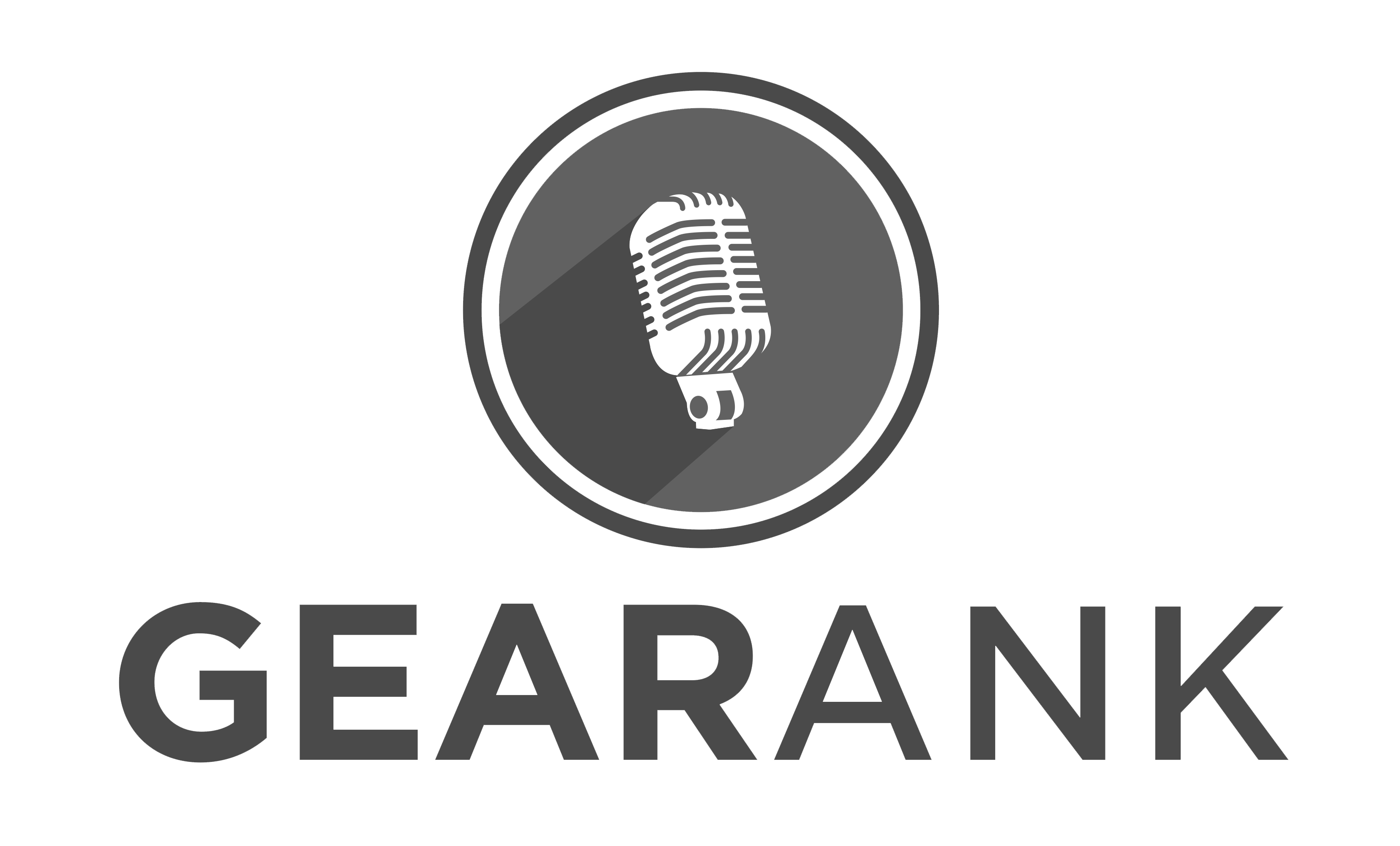
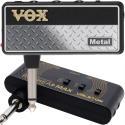
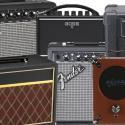

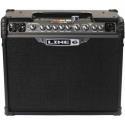

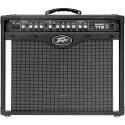
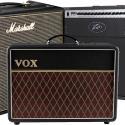
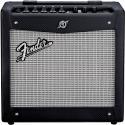
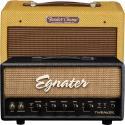

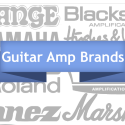 The Best Guitar Amp from the Top 10 Guitar Amp Brands
The Best Guitar Amp from the Top 10 Guitar Amp Brands
Publication of our August 2022 Edition resulted in the following amps coming off the recommended list above:
The following amps were removed from the recommended list above due to the publication of our March 2022 Edition:
Publication of our July 2021 Edition resulted in the following amps coming off the recommended list above:
It would be nice to know the various reasons as to why you remove particular amplifiers from your recommended list.
Hi Ian,
What happens is that when we produce a new edition of one of our guides, we recalculate the ratings for all the eligible items already in our database, plus we add new items that weren’t rated for the previous edition (new items are coming out all the time), then we select the highest rated options to recommend.
This means there are usually new items that have higher ratings than some of the ones from the previous edition, so the lower rated ones get removed and we add ones with higher ratings.
Some items also get discontinued or superseded, so we remove those as well – there’s no point in recommending something if our readers can’t act on our advice.
Also when prices go up a product may no longer be eligible for inclusion – and we sometimes change the eligibility criteria making some items ineligible – we usually list the selection criteria in the Methodology section.
I hope this helps – feel free to ask if you have further questions.
Jason.
You actually failed to note that the Quilter Mach 2 is not a “practice amp” (although it also works well for that too), but despite the 8″ speaker, is an extremely powerful and loud gigging amp that will hold it’s own on just about any stage. I had one for a while, but just about the only thing it doesn’t do is Fender bright cleans. It certainly does everything else amazingly well.
Actually the Quilter Mach 2 meets our practice amp definition stated in the Methodology section as:
Your opinion of Quilter is one that many guitarists agree with – they appeared 5th on our ranking of Guitar Amp Brands this year.
I’m looking for a practice amp with built in metronome or drum loops. You mentioned this feature becoming more used in practice amp. Can you tell me amps which feature this?
Thank you and best wishes
Martin
As a guitar teacher myself, I cannot stress enough the importance of practicing with a metronome, or at the very least, a rhythm guide.
Line 6 Spider V amps have both metronome and drum loop features. Fender Mustang GT amps also have built-in looper which can be used as pseudo metronome/drum loop.
Unfortunately, these amps did not have high enough ratings to make it to the guide.
Thankfully, there are practical alternatives that require no extra purchase – like using a metronome app on a device that can be plugged in or paired via Bluetooth to your amp.
Our September 2020 update resulted in the following amps coming off the recommended list above:
As a result of the October 2019 update the following amps came off our recommended list above but you can still see our analysis of them:
Today the following amps were removed from our recommended list above, due to having been discontinued, but you can still read our analysis:
As a result of our October 2018 update to this guide the following amps were removed from our recommended list above but you can still read what we have to say about them here:
Looking for practice amp with built in looper. The article mentions that such practice amps are gaining in popularity, but doesn’t mention any amps that have them.
There weren’t any that made it onto our recommended list but the Peavey Vypyr VIP 1 has a looper built in although you have to buy the Peavey Sanpera Foot Controller to use the looper.